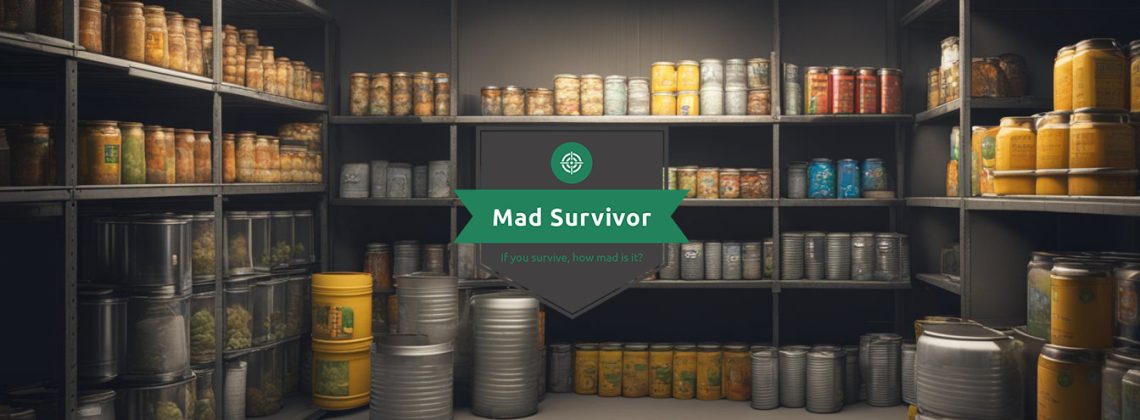
A survival bunker can be a critical haven in times of unexpected emergencies. Often, the idea of constructing a bunker might seem daunting, but it’s a process that emphasizes your security and can be quite rewarding. Think of it as a personalized safety net that you can rely on when natural disasters, societal disruptions, or other unforeseen events occur. Careful planning is important though, from selecting a suitable location to deciding on amenities that will make your bunker both comfortable and functional for long-term habitation.
When it comes to building your survival bunker, you’ll want to consider your requirements in terms of size, durability, and the ability to maintain it. A common approach is to start by digging a hole to the desired depth and dimension, ensuring stability of the surrounding earth as you go. Material choice is crucial here; some may opt for reinforced steel plates for robustness, while others might find that a concrete slab offers a good balance of security and cost-effectiveness. Even dropping in a modified shipping container could be an option.
Inside your bunker, stockpiling essential supplies is crucial to ensure self-sustainability. Your checklist should include food, water, medical supplies, and power sources, but don’t forget the importance of air filtration and waste disposal systems. It’s not just about surviving; it’s about maintaining a livable environment for an extended period. Camouflaging your bunker’s entrances and thinking about concealment strategies will keep it discreet, adding an extra layer of safety and peace of mind.
Understanding the Basics
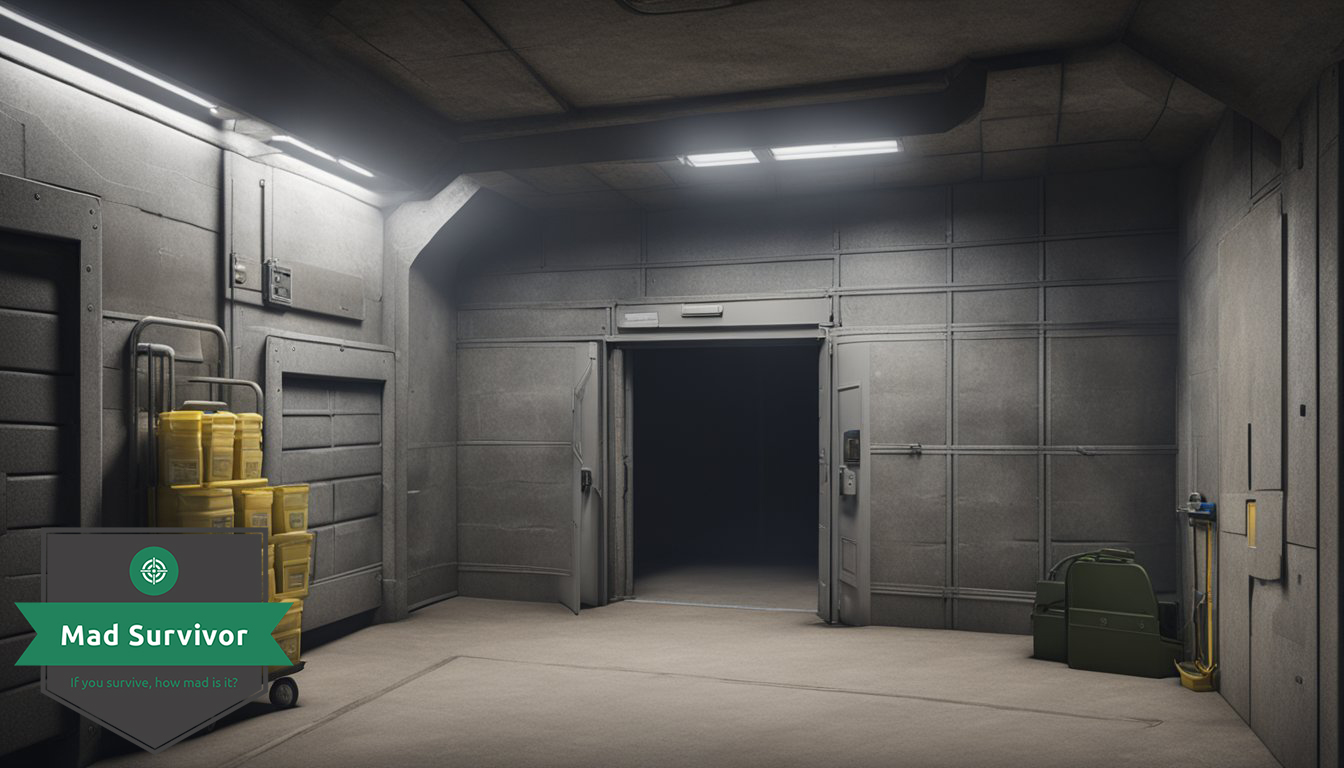
Your focus should be on its core purpose, the different types you can build or buy, and the best possible locations for safety and sustainability.
Purpose of a Survival Bunker
Survival bunkers are designed as a safe retreat in the face of emergencies, whether it’s a natural disaster or other serious events. They serve as a shield against the elements and potential hazards, providing you a secure place to wait out the situation.
Types of Bunkers
- Underground Bunker: Typically offers the most protection, especially useful in a nuclear fallout scenario.
- Fallout Shelter: Specifically designed to protect against radioactive debris.
- Backyard Underground Bunker: Handy and accessible in an emergency situation, could be a simple shipping container modification or a custom build.
Ideal Locations
When selecting a location for your bunker, consider:
- Space: Ensure enough area for the structure and essential resources.
- Water Table: Avoid high water table areas to prevent flooding.
- Natural Features: Locations away from rivers and fault lines reduce risk from flooding or earthquakes.
- Accessibility: It should be within a reasonable distance from your home for quick access in an emergency.
Design and Construction

Building a survival bunker involves thorough planning, precise excavation, and diligent construction to ensure a secure and enduring refuge. Read on to grasp the essentials of designing and erecting your underground sanctuary.
Site Selection
When you’re choosing the location for your bunker, prioritize security and accessibility. Opt for a site with stable soil conditions to avoid excessive water accumulation, which can compromise the structure. Ensure it’s on high ground to reduce flood risk, and consider proximity to your residence for quick access in emergencies.
- Key factors for site selection:
- Soil stability
- Flood risk
- Accessibility
- Security
Excavation and Foundation
The excavation depth should extend at least 2 feet below your bunker’s height to accommodate the foundation and roofing material. Hiring a professional excavator is recommended to ensure safety and proper handling of earth. The foundation is critical; it supports the weight of the bunker. Cast concrete creates a sturdy base, but make sure it’s reinforced to withstand soil pressure.
- Steps for excavation and foundation:
- Determine excavation depth
- Hire professional services
- Choose reinforced cinder blocks or concrete for the foundation
Structural Design
Your bunker’s layout and size should be planned meticulously. A practical floor plan maximizes the use of space while ensuring functional areas are well-defined. Use materials like reinforced steel or concrete for the walls. Consider the weight that the roofing material must bear, as it should support earth and any aboveground activities without risk of collapse.
- Structural considerations:
- Functional layout and size
- Reinforced walls
- Strong roofing material to sustain overburden
Entrances and Exits
Your bunker’s entrance should be discreet yet accessible, with reinforced doors that seal tightly. Multiple exits ensure that you have an escape route in case the primary entrance is blocked. Incorporate hidden air vents to maintain airflow and consider their security to prevent contaminants from entering.
- Entrance and exit specifications:
- Secure and reinforced entrance
- Secondary exits for safety
- Concealed but efficient air vents for ventilation
Safety and Security
Your survival bunker is your safe haven during emergencies, so it is essential to prioritize safety and security features. These not only protect you from immediate dangers but also ensure the long-term durability and habitability of your shelter.
Reinforcement and Materials
To safeguard your survival bunker against natural disasters and external risks, it’s imperative to use sturdy materials in construction. Consider the structural integrity of doors and walls; reinforcing these with materials such as steel can add an extra layer of security.
Air Filtration and Ventilation
Maintaining a constant flow of fresh air is critical, particularly to protect you from threats like nuclear fallout or chemical hazards. Invest in high-quality air filtration systems and secure your air vents against potential breaches. Ensure that your air system can both prevent contaminants from entering and manage the internal climate of your bunker.
- Filter type: HEPA or higher (capture particles as small as 0.3 microns)
- Maintenance routine: Regular checks and replacement as necessary
Fire Safety and Prevention
Fire safety is crucial; a fire in a confined space can be devastating. Equip your bunker with smoke detectors, fire extinguishers, and establish clear protocols for managing fire risks. Use materials that are resistant to fire where possible and have an evacuation plan in case of an emergency. Regularly practice fire drills to ensure you are prepared.
- Prevention Tools:
- Smoke Alarms
- Fire Extinguishers
- Flame-retardant materials
Threats and Challenges
Preparing for threats and challenges means honing your survival skills and having contingency plans for various scenarios. From natural disasters to unforeseen intrusions, staying vigilant and having a well-thought-out response plan is your best defense. Regularly update your plans to adapt to new information and potential risks, ensuring you are always equipped to face challenges head-on.
Life Inside the Bunker
Living in a survival bunker brings its own set of challenges and adaptations, particularly in areas such as sustainable living practices, efficient storage, and maintaining a high quality of life. In this section, we’ll explore how you can best manage your resources and space to ensure a comfortable and sustainable existence underground.
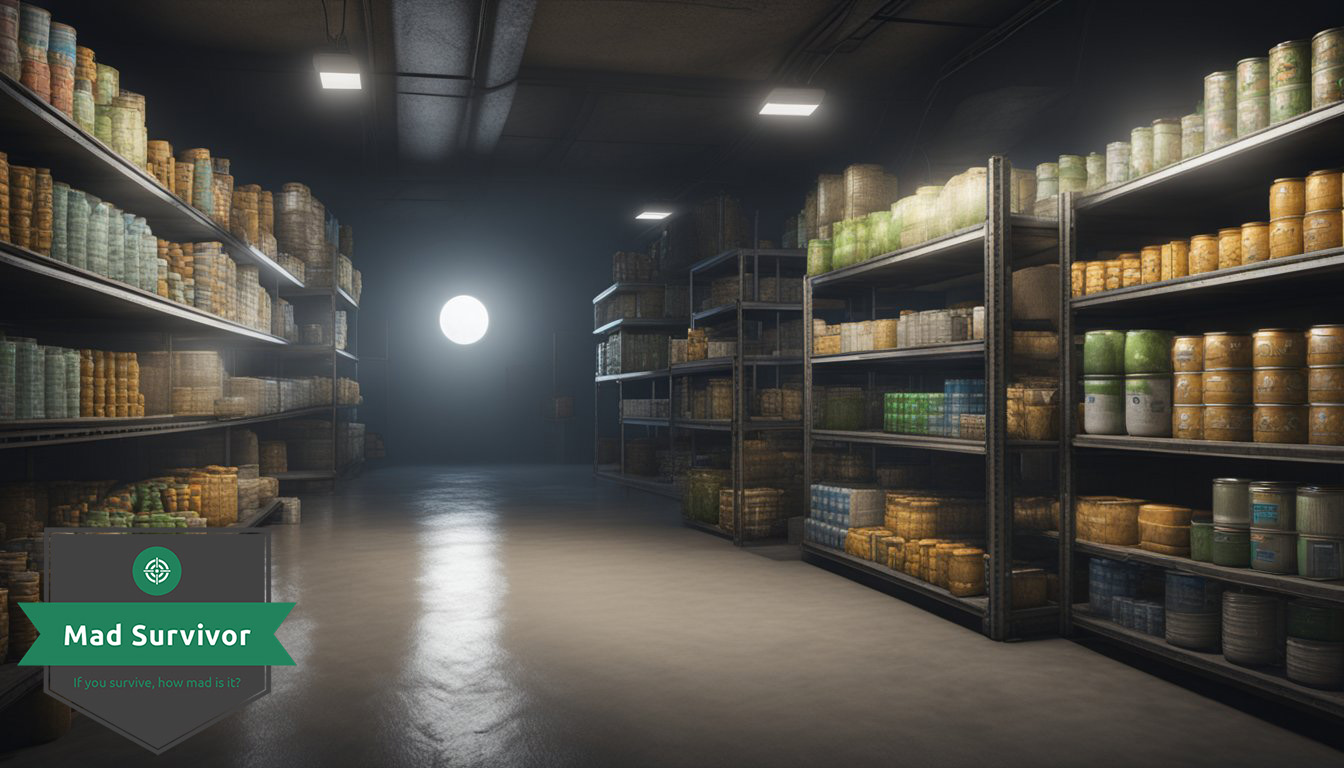
Sustainable Living
To ensure long-term sustainability in your bunker, you’ll need to incorporate renewable energy sources, such as solar panels or wind turbines, depending on your surface access. Additionally, consider setting up systems to harvest rainwater, while staying mindful of the local water table to avoid contamination. Implementing waste recycling and composting can greatly reduce your impact on the environment and provide you with rich soil for growing fruits, vegetables, and herbs.
Food and Water Storage
Your bunker should have a designated area for food and water storage that is cool, dry, and away from any sources of heat or light to preserve shelf life. Regularly rotate your stockpile of survival food to keep it fresh, and invest in a variety of non-perishable items that include grains, proteins, and canned goods. Ensure you have a system in place for purifying and rationing clean water to last through extended stays.
Utility Systems
Reliable utility systems are crucial for life inside a bunker. Install water filtration and purification systems to maintain access to potable water. For power, set up battery banks connected to your renewable energy sources and keep backup generators as a contingency. Ensure your heating and cooling systems are efficient and well-maintained, as proper insulation is key for energy conservation and comfort. Keep in mind the varying temperatures that could be experienced during Summers and Winters.
Space Management and Storage
To make the most of your space, carefully plan your bunker’s layout to maximize efficiency and ease of movement. Create multifunctional areas wherever possible and utilize storage spaces such as built-in cabinets, shelves, and wall racks. Overhead and under-floor compartments can be particularly useful for storing supplies without cluttering living areas.
Comfort and Morale
The psychological aspects of bunker living cannot be overstated. Strive to make your environment as comfortable as possible by including soft furnishings, personal items, and entertainment options. Regular physical and mental activities are essential to keeping spirits high. Spaces designated for exercise, hobbies, and social interaction can greatly enhance your morale and overall quality of life underground.
Survival Supplies and Equipment
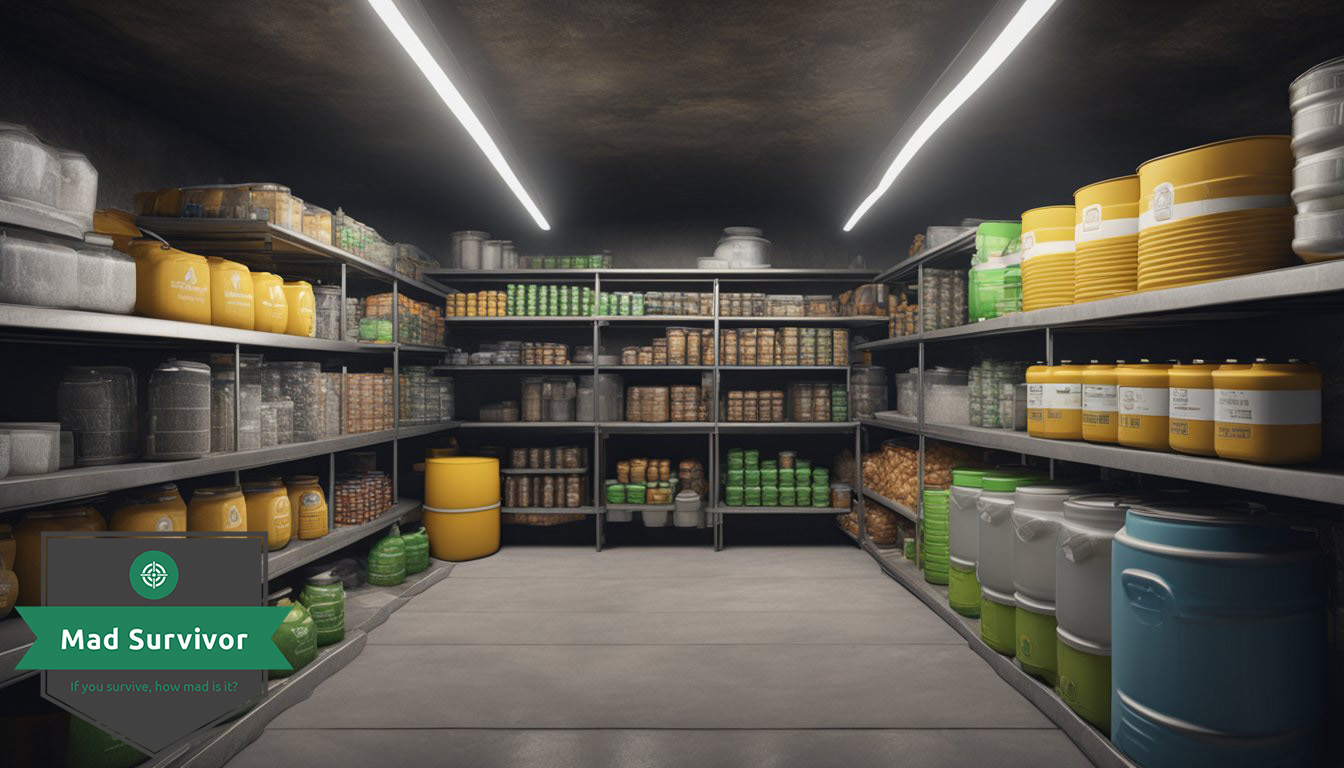
In preparing your survival bunker, it’s essential to stock up on emergency kits and survival gear that meet your basic needs and ensure your safety.
Emergency Kits
Your emergency kit should act as your first line of defense in a crisis. It’s vital to include first aid supplies to tend to any medical needs that might arise. A well-stocked first aid kit includes bandages, antiseptics, pain relievers, and prescription medication, along with instructions for performing CPR and other survival skills. Make sure you have tools to ensure access to clean water, such as filtration devices or purification tablets.
- Sample First Aid Kit Contents:
- Antiseptic wipes and creams
- Various sizes of adhesive bandages
- Gauze pads and medical tape
- Tweezers and scissors
- Pain relievers: acetaminophen, ibuprofen
- Prescription medications and personal medical supplies
- CPR mouth barrier
- Emergency blanket
Survival Gear
As for survival gear, focus on items that help maintain your shelter and support day-to-day activities in your bunker. Versatile tools like a sturdy survival tarp are important for creating various shelter setups outside the bunker if needed. Equip your bunker with sustainable food storage options and a means of power generation and backup, like solar panels or hand-crank radios.
- Key Survival Gear:
- Waterproof and rugged survival tarp
- High-quality knives and multi-tools
- NBC (nuclear, biological, chemical) air filtration system
- Manual can opener for food
- Solar-powered or hand-crank flashlight and radio
- Spare batteries and solar chargers
Selecting the right supplies and equipment will boost your preparedness level and provide peace of mind, knowing you’re ready for various situations. Your preparation as a prepper or survivalist is not just about having items on hand; it’s about ensuring you have reliable, quality tools that enhance your ability to weather any storm.
Skills and Training
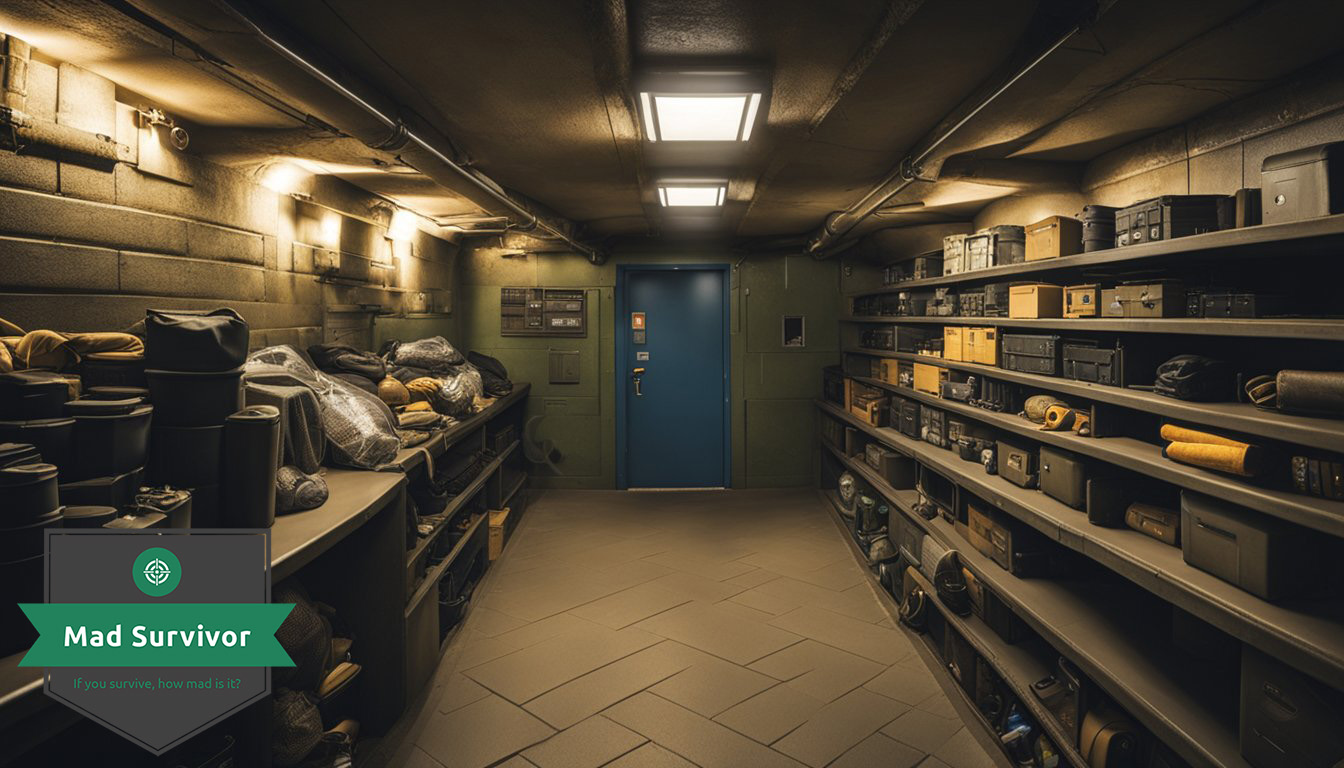
To ensure your safety and self-sufficiency in a survival bunker, acquiring the right skills and training is crucial. These abilities are your toolkit for handling emergencies with confidence.
First Aid and Medical Training
Your first aid knowledge can be the difference between life and death in an emergency situation. Focus on learning the following key skills:
- CPR: Essential for reviving someone who’s stopped breathing or whose heart has stopped.
- Wound Care: Understand how to clean and dress various types of wounds.
- Fracture Management: Learn to stabilize and immobilize broken bones.
- Disease Prevention: Methods to prevent illness, particularly in confined spaces like a bunker.
Survival Tactics Education
Survival skills can help you adapt and thrive both inside and outside your bunker:
- Foraging: Identifying edible plants can supplement your food supplies.
- Shelter Building: Skills to create temporary shelter can be valuable if you need to leave your bunker.
- Signaling for Help: Learn methods of attracting rescue teams if necessary.
Familiarize yourself with survival training opportunities and consider practicing these skills in controlled environments to bolster your confidence and competence.
Maintenance and Upkeep

Proper maintenance and upkeep are vital to ensure your survival bunker remains a safe haven during emergencies. A well-maintained bunker preserves the integrity of sturdy materials, prevents failures in utilities, and guarantees the supply of clean water and air.
Routine Checks and Balances
Storage: Regularly check your stored items and rotate supplies to avoid expiration. Ensure that food, water, and medical supplies are adequately stored in conditions that prolong their shelf-life.
- Air Filtration: Inspect your air filtration system every three months. Make sure filters are clean and functioning to prevent contaminants from entering your bunker. Replace filters as required.
| Tasks | Frequency | Notes |
|---|---|---|
| Filter Check | Quarterly | Clean or replace if airflow is reduced. |
| Water Rotation | Every 6 Months | Prevent stagnation and bacterial growth. |
Utilities: Test backup power sources, lighting, and communication devices monthly. Address any disruptions in power or water supply immediately to ensure continuous functionality.
Repairs and Renovations
- Structural Integrity: Conduct a thorough inspection of the bunker’s interior and exterior annually. Look for signs of structural damage or wear in roofing material and walls. Repair any damage promptly to prevent issues from escalating.
- Water System: Maintain the integrity of your water storage tanks and pipes. Fix leaks and seal vulnerabilities to secure your clean water supply against contamination and ensure its availability when you most need it.
Maintenance Schedule:
| Component | Check For | Action Needed |
|---|---|---|
| Walls and Roof | Cracks, leaks, and erosion | Seal and fortify |
| Doors and Seals | Wear and loss of watertightness | Replace worn parts |
Conclusion
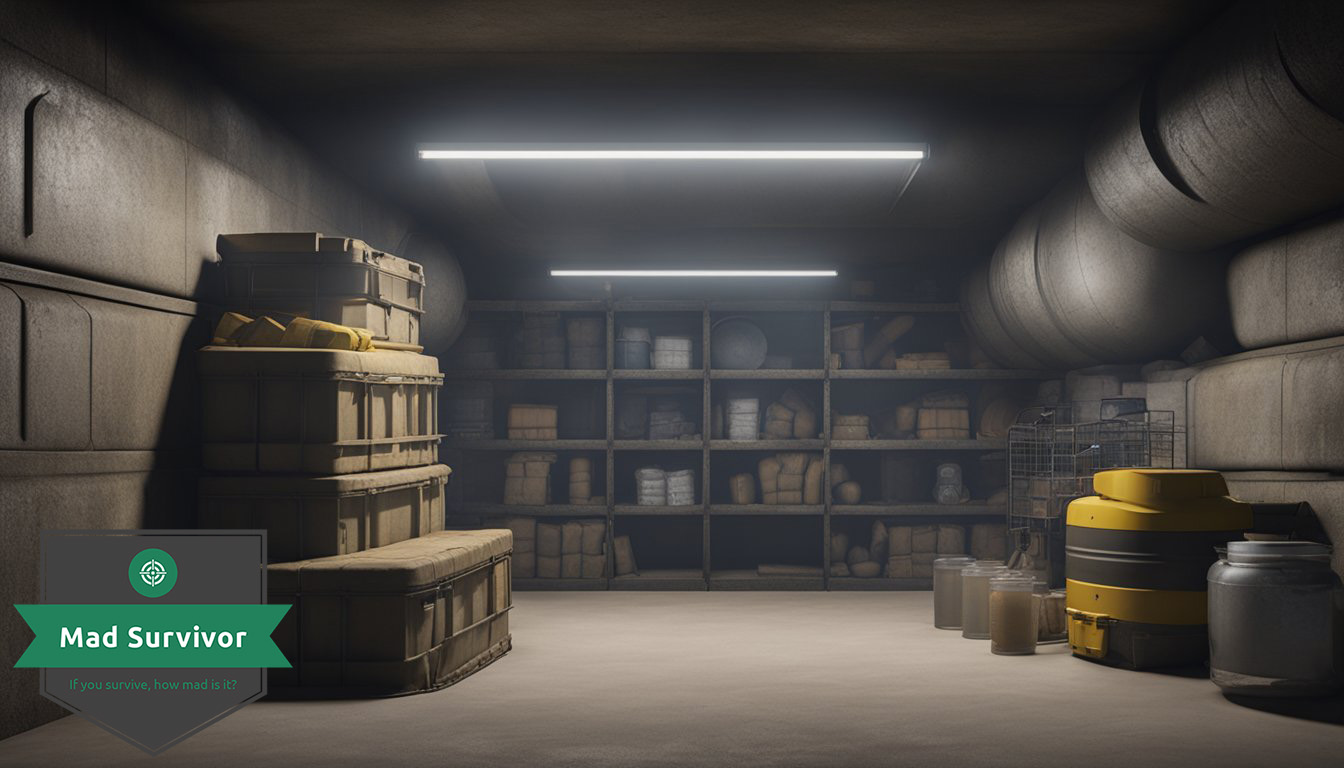
Building a survival bunker is a significant step towards ensuring your safety and preparedness for unforeseen events. It requires careful planning and consideration of various factors, such as location, size, and sustainability features. As you embark on this endeavor, remember that your bunker should be a safe and secure retreat that can support you and your loved ones in times of need.
- Plan Thoroughly: Ensure you have covered all the essentials from water storage to waste management.
- Quality Over Cost: Invest in durable materials to safeguard your bunker’s longevity.
- Efficient Design: Optimize for space, comfort, and functionality.
Through your preparation, you create not just a physical structure but peace of mind. Consider integrating renewable energy sources, such as solar panels, to maintain power autonomously within your bunker. Regularly update your emergency supplies and keep your survival skills honed.
Lastly, approach this project with a positive mindset. Your survival bunker is a testament to your resilience and foresight. By taking these steps, you are not just building a shelter but ensuring a safer future for yourself and your family.

Leave a Reply